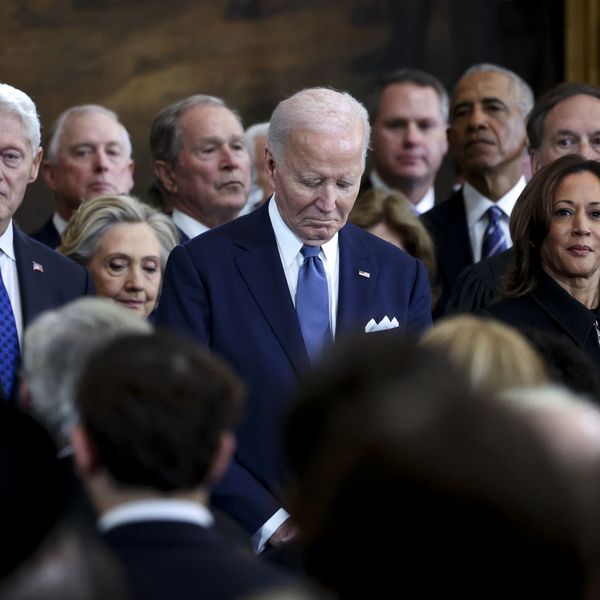As this year’s Black History Month comes to a close, the struggle for racial understanding and justice in the United States hangs by a thread in many of the nation’s state houses.
At the state level, Florida Gov. Ron DeSantis spent a year trying to burnish his standing in the Republican Party’s primaries by restricting the teaching of America’s racial history in public schools. What DeSantis is doing threatens to seriously weaken public education in other states as well. This only cements racism deeper into American culture and degrades our democracy.
Just because this struggle is no longer front-page news, and just because DeSantis dropped out of the race, doesn’t signal that its importance has diminished. To the contrary, those opposed to racial justice have often achieved their objectives when the spotlight shifts away from their efforts. That is my fear regarding public education right now.
In essence, DeSantis is demanding that public schools teach that whatever problems Black students face in schools, in jobs, in the streets, or with the police have nothing to do with racial discrimination.
In Florida’s public schools, all the way up to seniors in high school, DeSantis had convinced the state legislature to prohibit teaching students about the reality of slavery and its aftermath, through the post-Civil War Jim Crow era right up until now.
His claimed justification: Teaching that conveys a hurtful message to white students that can make them feel “guilty” and damage them throughout their lives. But “feeling bad” about a pivotal, brutal centerpiece of U.S. history should be a growth experience for everyone.
In essence, DeSantis is demanding that public schools teach that whatever problems Black students face in schools, in jobs, in the streets, or with the police have nothing to do with racial discrimination. Rather than “blaming whites,” they should look to themselves and their family structure.
Whatever racial discrimination has existed since slavery, according to DeSantis, was wiped away by the passage of the Civil Rights Acts in the 1960s, which he claims leveled the playing field.
Not content to strip away how racism’s destructive impact on Black people continues to this day, the governor pressured the Florida State Board of Education to recommend that public universities include in their courses the “benefits” of slavery. For example, slavery trained enslaved people to become blacksmiths, butlers, maids and cooks, and other functions their owners demanded slaves to perform—leaving out the horrors of being whipped, beaten, or killed at the whim of their masters.
“You’ve Got to Be Carefully Taught”
When I think about the law that DeSantis got his rubber stamp legislature to pass, my mind shifts back to my parents taking me at 13 to see Richard Rodgers and Oscar Hammerstein’s hit Broadway musical South Pacific.
Set on a base in the Pacific islands where American forces were fighting the Japanese during World War II, a second lieutenant fell in love with a beautiful Polynesian woman from a neighboring island.
Thinking of taking her back to the United States, he realized that the Jim Crow South would make that impossible. The officer sang a lament entitled “You’ve Got to Be Carefully Taught.”
Living in a closed off white world and rarely hearing of Black people except those who were athletes or performers—or those who were arrested and made the newspapers—was teaching enough.
Its lyrics spelled out clearly how children had to be taught by the age of six, seven, or eight to hate people their parents hated and to rule over people whose skin was a different shade than their white skin, and he despaired about any future for their relationship.
At that time, up North where my family lived in New York City, our family employed Black workers in our apartment. But contrary to the Rodgers and Hammerstein song, I didn’t remember being taught anything about them. They were just there.
So, did that mean I had escaped a racist education? No—it just looked different up North.
My parents called these workers by their first names, while they called my parents Mr. and Mrs. Our butler, William Rutherford, and his wife, Loraina, had a warm spot for me and I liked both of them, which was perfectly fine with my parents. Yet I had no understanding of what their lives were like outside of our apartment. They always seemed to be working and living in the tiny back room and bath in our home, where I sometimes spent hours with them when my parents were out.
With Bill and Loraina in the apartment, my parents could come and go as they pleased and even travel. Our family needs were provided by them, and they also provided companionship and friendly supervision. My friends and I, growing up in the 1940s and 1950s, had no sense that we had been carefully taught—through the silence that left us in the dark—to view Black people as inferior like that lieutenant in the South Pacific musical sang.
But we did become aware as we grew up that in the South, laws required segregation and limited where Black people could go—even whether they could be outside after dark. We became aware that Black people could be thrown into jail or lynched if they did not obey.
Yet the reality was that our Northern public schools were also segregated—not by rigid law, but by our housing, economics, and way of life. Once, when William Rutherford was driving me to my grandfather’s country club in Westchester when I was 17, I asked Bill about his experience during World War II in the Navy as a SeaBee, knowing that his unit was all Black. It was constant drudgery, he said. Boiling hot. They treated us like dirt.
Never again did I broach the subject, leaving our conversation, as usual, all about me.
After the passage of the groundbreaking Civil Rights Act and Voting Rights Act in the 1960s, at a time when I became a civil rights lawyer working for the National Association for the Advancement of Colored People (NAACP), Black people continued to live in a rigid second-class environment, North as well as South.
To be sure, most of our teaching up North was silent. As white Northerners, the world we lived in was almost all white. This included all the people working in the banks, the doctors’ offices, the stores, the restaurants, and theaters. My parents’ friends were white, as were all the cops, the firemen, the elevator operators and doormen in our building.
Living in a closed off white world and rarely hearing of Black people except those who were athletes or performers—or those who were arrested and made the newspapers—was teaching enough.
Now, decades later, many things have outwardly changed. There are successful Black businessmen and women, lawyers, and doctors working in what were all white firms and hospitals, as well as Black cops and firemen. Even a president of the United States as well as across the spectrum of elected and appointed government officials.
To create that very different world, it has taken many years of demonstrations and lawsuits and the deaths of civil rights workers along the way. But progressive whites as well as Blacks know there is much work still to be done. Many cities still have segregated, barely functional public schools, and there are zoning laws and regulations that serve to segregate many suburban areas, locking out all but the wealthy.
Tragically, there are still employers who reject those who seek employment with “Black” sounding names or criminal records, and our prisons are overcrowded, with too few rehabilitation programs. The statistics are there for all to see.
Don’t Let Our History Slip Away
In many ways, we are being pushed backward by a counterrevolution made worse by trade policies that outsourced millions of often white working class jobs, opening these white workers to a racist opportunist like Donald Trump.
Enter another man with his Harvard and Yale credentials, aping Trump, named DeSantis. Attempting to push Black Americans back further into second class status, DeSantis grabbed onto education as his hook. His approach to education pulls us back to the Rogers and Hammerstein song that helped awaken me as a child.
To do this, he has promoted two new twists to what would be his perversion of how to teach about racism. First, don’t teach either Black or white children the country’s terrible racial history, DeSantis says. Instead, he wants Florida’s teachers to quickly pass over the subject and be silent about its continuing existence and impact.
As long as DeSantis and the politicians that follow his attempt to stop our teachers from teaching our children about racism and its long American history, we must work to stop him and those who follow his example.
Now, however, DeSantis adds an addition to his heavily censored version. He claims that slavery had its good side because it taught a few slaves to have some basic craft skills like shoeing a horse for the master to ride.
Disgusting, many of us lament. But what is new about this? We have lived through racist governors and racists senators and racist presidents, too many to count them with their names on universities, institutes, and fellowships. Oh well, we say, that happened in a different age.
But it is not. As long as DeSantis and the politicians that follow his attempt to stop our teachers from teaching our children about racism and its long American history, we must work to stop him and those who follow his example.
We can stop him if we are diligent in fighting back. We must organize across race. We can write articles for our local newspapers and send letters to the editor, and we can ask our friends to do the same. We can demand that the leaders of our elite institutions, like the ones DeSantis graduated from, and the publishers of grade school and high school textbooks, refuse to surrender to falsehoods.
Our democracy depends upon this.



